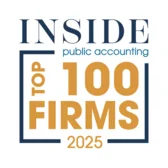As the effective date for Accounting Standards Codification 606, Revenue from Contracts with Customers (ASC 606) is fast approaching; Companies are seeking guidance on how to best prepare for adoption. Below are actions you can take to make the transition easier.
First: Familiarize Yourself With the Five Steps in the New Revenue Recognition Standard
Step 1: Identify the contract(s) with the customer
Step 2: Identify the performance obligation(s) in the contract
Step 3: Determine the transaction price
Step 4: Allocate the transaction price to the performance obligations in the contract
Step 5: Recognize revenue when (or as) the entity satisfies a performance obligation
Articles and guides evaluating the new standard are readily available and can be a great resource. However, during the preliminary stages, spending extensive time researching the standard and various interpretations may not be necessary. You should have a general understanding of the standard including the basic principles of the five steps to evaluating revenue recognition. Don’t fall into the trap of assuming that the analysis will be easy. Although there may, in fact, be no change to when and at what amount revenue is recognized, a detailed analysis in accordance with ASC 606 will need to be performed for each type of customer contract. In addition, the organization will need to support management’s judgments and conclusions reached to external auditors, if applicable.
Second: Take an Inventory of Your Contracts
Organize customer contracts into buckets (i.e., based on revenue streams). If your organization uses standard language, separating your contracts by revenue stream may be sufficient. However, consider if further disaggregation is needed for contracts where terms vary. It is not uncommon for organizations to modify their standard contracts based on customer requests.
Now is the time to ensure you understand the terms of your customer contracts and if they meet the requirements of enforceability in accordance with ASC 606. You will need to consider if there is commercial substance to the contract (i.e., is there a penalty if the customer were to back out of the contract such as a nonrefundable deposit or a significant penalty for cancelation in the contract). If an agreement doesn't meet the definition of a contract under ASC 606, revenue recognition will be delayed until all performance obligations are completed, and consideration has been received.
Consider the idea of contract combination. Although contracts are separate legal documents, if issued simultaneously, they may need to be combined for accounting purposes and evaluated together in accordance with ASC 606.
Third: Perform a Walkthrough of One Primary Contract
Select one of the most prevalent customer contracts and walk through the five steps in the new revenue recognition standard. Determine when revenue will be recognized and if this is significantly different than your current revenue recognition accounting policy. If your organization has multiple revenue streams and varying contracts, consider walking through one contract from each revenue stream.
Questions you should be asking and answering as you evaluate your contracts are:
• Do you have a contract in accordance with ASC 606?
• How many performance obligations are included in each contract?
• How will you allocate the transaction price to each performance obligation?
• Is the standalone selling price of each performance obligation readily available?
• When determining the transaction price, is it a fixed price contract or do you have variable consideration (e.g., incentives for completing the project early) that needs to be estimated?
• Does the contract grant the customer with material rights as defined in ASC 606 (e.g., granting the customer an option to acquire additional goods at a discount)?
• Will you be recognizing revenue over a period of time or at a point in time as the performance obligation(s) are satisfied?
Fourth: Determine Your Method of Implementation
ASC 606 is effective January 1, 2018, for calendar year-end public companies and January 1, 2019, for calendar year-end private companies and must be adopted retrospectively (full retrospective or modified retrospective). Once you better understand the impact ASC 606 has on your Organization’s revenue recognition policy, document a roadmap to adoption. Start by answering the following questions:
• What method of adoption does the organization plan on taking (i.e., full retrospective or modified retrospective approach?
Even when using the modified retrospective approach for calendar year-end companies, a cumulative adjustment will be made to retained earnings as of December 31, 2018, and a disclosure of the current year balances under old revenue recognition guidance is required.
• What is the organization’s current approach to calculating revenue recognition (i.e., Excel or specialized software)? Do changes need to be made and how difficult will those modifications be? Will software updates need to be considered?
• Will an outside consultant be required can the organization tackle implementation with internal resources?
This new standard may have a major impact on the timing and amount of revenue recognized each period and directly impacts the cash flow of your organization. You may need to adjust commissions, and executive bonuses, based on the financial performance of your organization and the timing of when estimated tax payments are due. Procrastinating preparation for any necessary changes this new standard brings may only result in unnecessary business interruptions. Organizations should get organized, to be ready for the changes coming their way. ASC 606 is here – the time is now!
About Jessica Saugstad
Jessica has over twelve years of public accounting experience and serves clients primarily in the real estate and financial services industries. Her real estate clients include developers, homebuilders, management and real estate service companies and real estate own-and-operate entities. Jessica also has experience providing audit and accounting services to financial service organizations such as investment advisors, loan originators and investors in performing and nonperforming loans. She received a bachelor’s of arts degree in economics with an emphasis in accounting from the University of California, Santa Barbara and began her career at Deloitte. Jessica is a member of the American Institute of Certified Public Accountants. To learn more about Jessica and HCVT, see www.hcvt.com.

